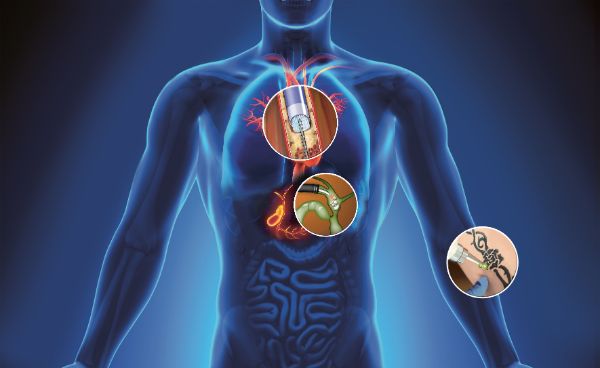Special fused silica fibers for medical applications
The goal of surgical treatments has always been a rapid recovery - with as little discomfort as possible after the procedure. Minimally invasive surgery with pure light, or rather laser light, seems particularly promising. Many surgical systems are therefore already based on special optical fibers that guide laser light to the point of use in the body. These fibers are based on fused silica rods as preforms, which are continuously optimized for new applications by the Specialty Fiber group of Heraeus Conamic.
Like conventional glass, synthetic quartz glass consists of silicon dioxide. However, it stands out from the crowd because it is bubble-free and extremely pure. This gives it up to 90 percent light transmission from the ultraviolet to the infrared wavelength range. Ideal for a laser light beam that even the smallest impurities can interfere with. "Standard glass can't compete with that," emphasizes Peter Bauer, Product Manager Specialty Fiber at Heraeus Conamic. "At the high powers transmitted by lasers today, normal glass would absorb too much energy compared to fused silica and be destroyed." In addition, fused silica fibers are break- and tear-resistant as well as extremely flexible. The last point pays off in surgeries to reach parts of the human body that are difficult to access.
The flexibility of the specialty fibers is an advantage, for example, in the laser treatment of kidney, gall or bladder stones, because the extremely small bending radius allows penetration into the very narrow channels of these organs. In addition, an even more compact infrared laser with a wavelength of 1,900 nanometers (nm) has also recently been used here instead of the earlier much larger and more inefficient devices with 2,100 nm. Another example is green laser light at 532 nm. It is ideal for treating growths on the prostate. The red blood cells absorb the green light and thus no bleeding occurs. In recent years, the gentle treatment of varicose veins with red laser light has also become increasingly popular. The radiation of the laser catheter with 633 nm enables the surgeon to seal the entire varicose vein with the catheter. What remains, if anything, is a small bruise.

Our contribution: Preforms for specialty fibers
The quality of the so-called preform is critical to the subsequent quality of the optical fibers that surgical system manufacturers use in their devices. The preform is a larger version of the fiber. This preform is then drawn by specialized companies in electric furnaces at close to 2,000 degrees to form fibers just 0.2 to 0.6 millimeters in diameter. The challenge here is to maintain the high quality of the fused silica during thermal forming to achieve the desired performance of the fiber.
Each medical application requires specific light sources and transmission properties of the optical fibers used. "Heraeus Conamic is able to offer any desired fiber design in the preforms that is precisely tailored to the requirements based on the parameters of geometry and refractive index level as well as the material used," Bauer explains. Depending on the required wavelength, different materials are available for the fused silica core and cladding of the fiber. This opens up countless design options for the fibers. There are good prospects that other diseases will be treated with laser light in the near future.
